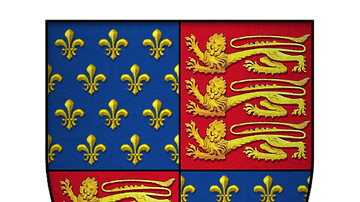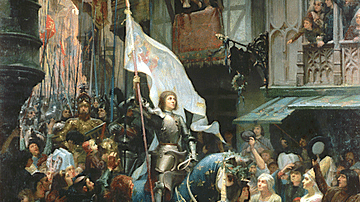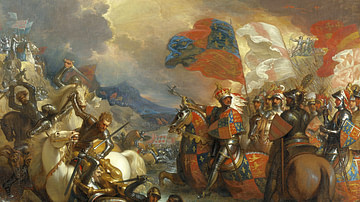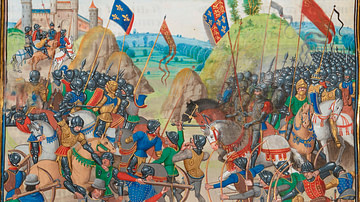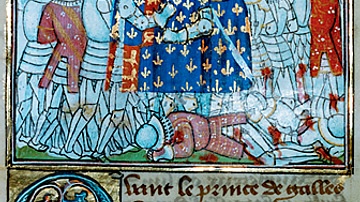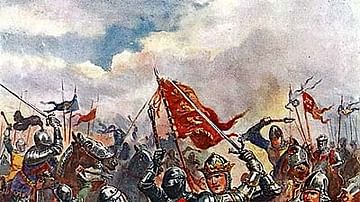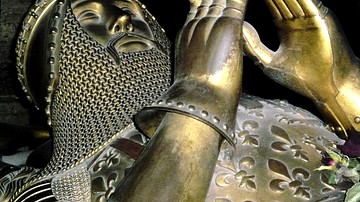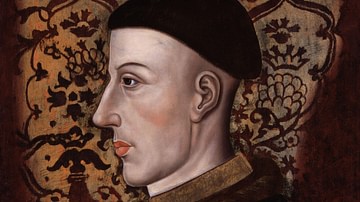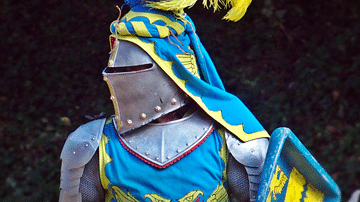There was a bitter rivalry between France and England throughout the 14th and 15th century CE and their frequent battles in this period are now known to history as the Hundred Years' War (1337-1453 CE). In this collection of resources, we examine the complex causes of the conflict, the major battles like Agincourt (1415 Ce) and the lasting consequences for the losers, England, and the winners, France. From Edward III of England (r. 1327-1377 CE) who started the whole thing off to Joan of Arc (1412-1431 CE), we look at some of the key figures and the spiralling events as two of Europe's most powerful states each battled to obliterate the other.
Both sides at the Battle of Crécy in 1346 CE had heavy cavalry of medieval knights and infantry but it would be the English longbow that proved decisive - then the most devastating weapon on the medieval battlefield. These longbows measured some 1.5-1.8 metres (5-6 ft.) in length and were made most commonly from yew and strung with hemp. The arrows, capable of piercing armour, were about 83 cm (33 in) long and made of ash and oak to give them greater weight. A skilled archer could fire arrows at the rate of 15 a minute or one every four seconds.
